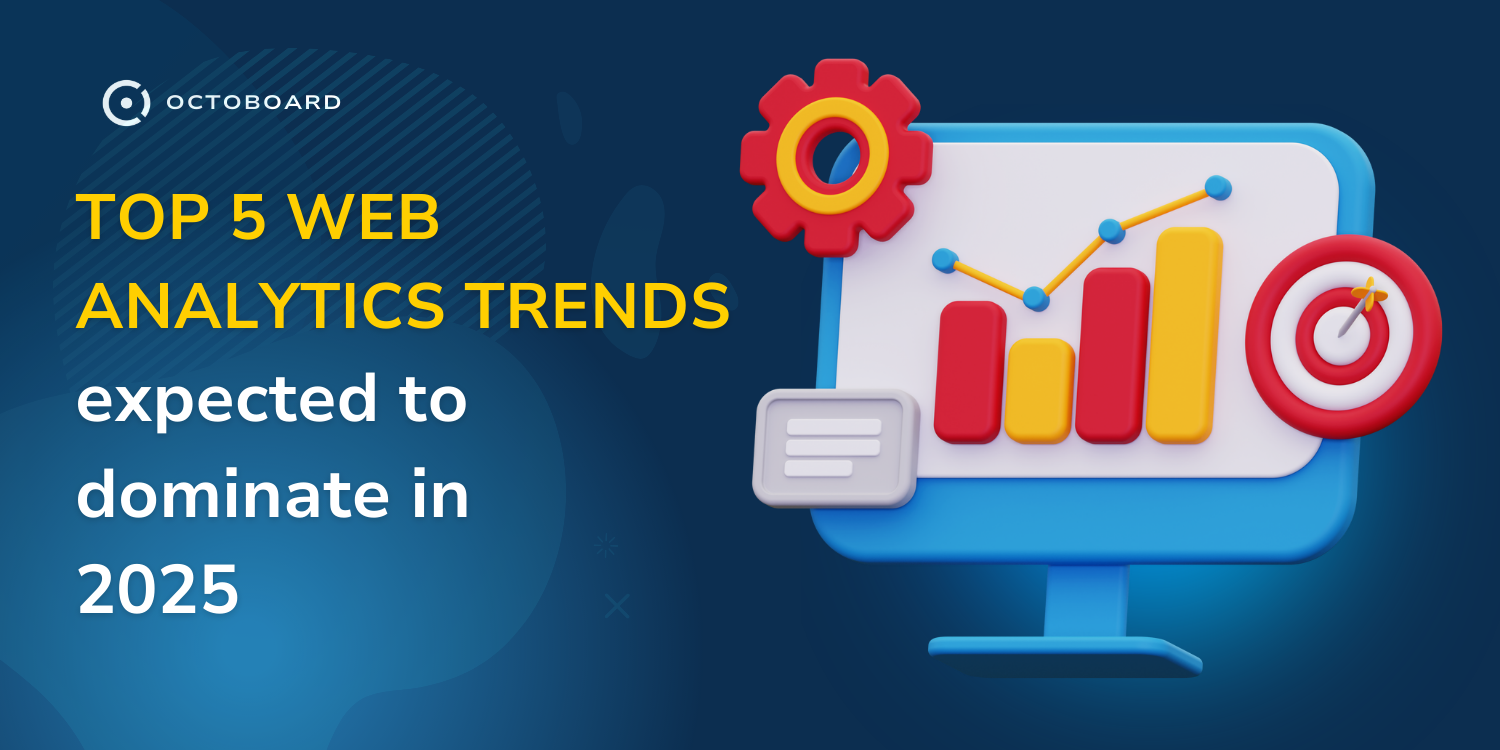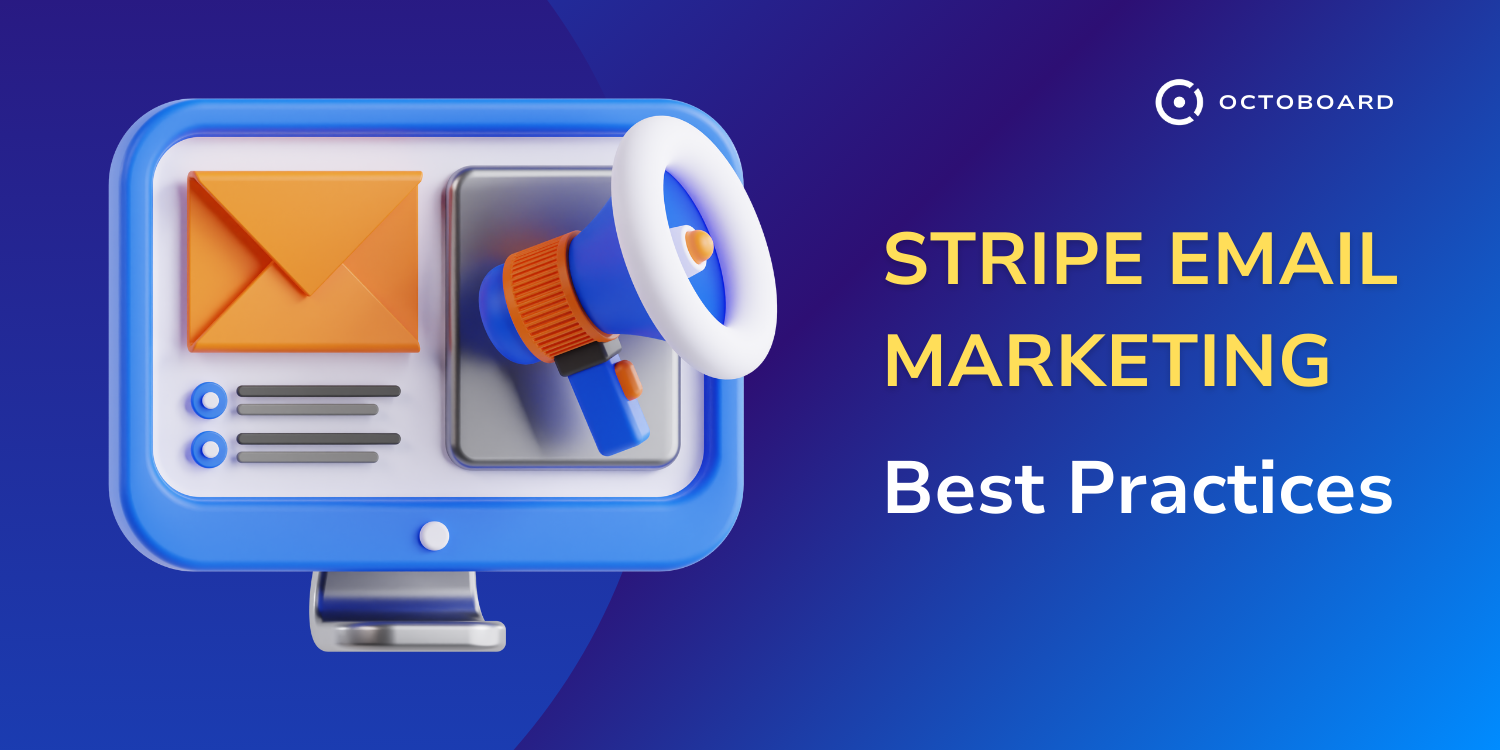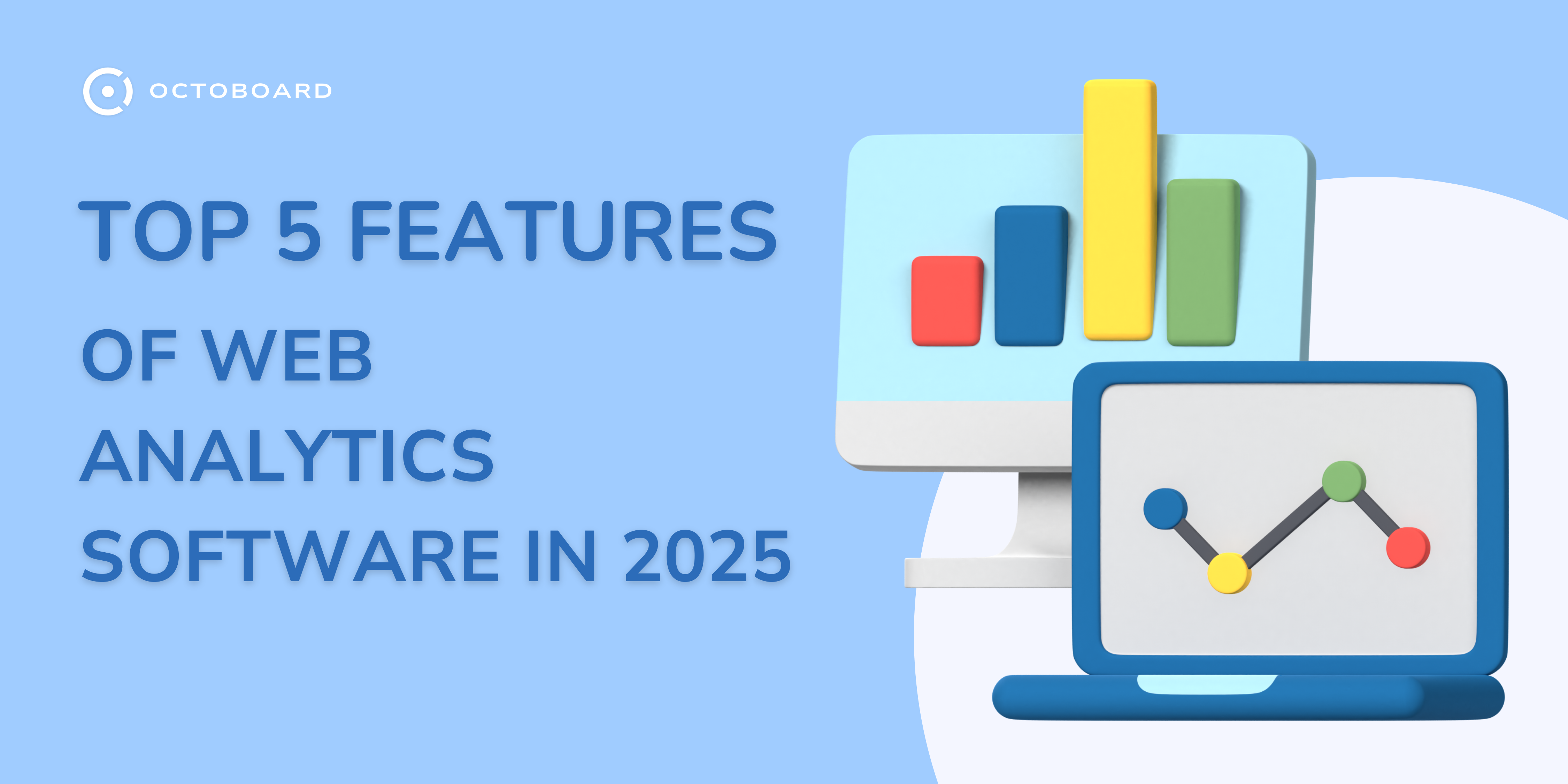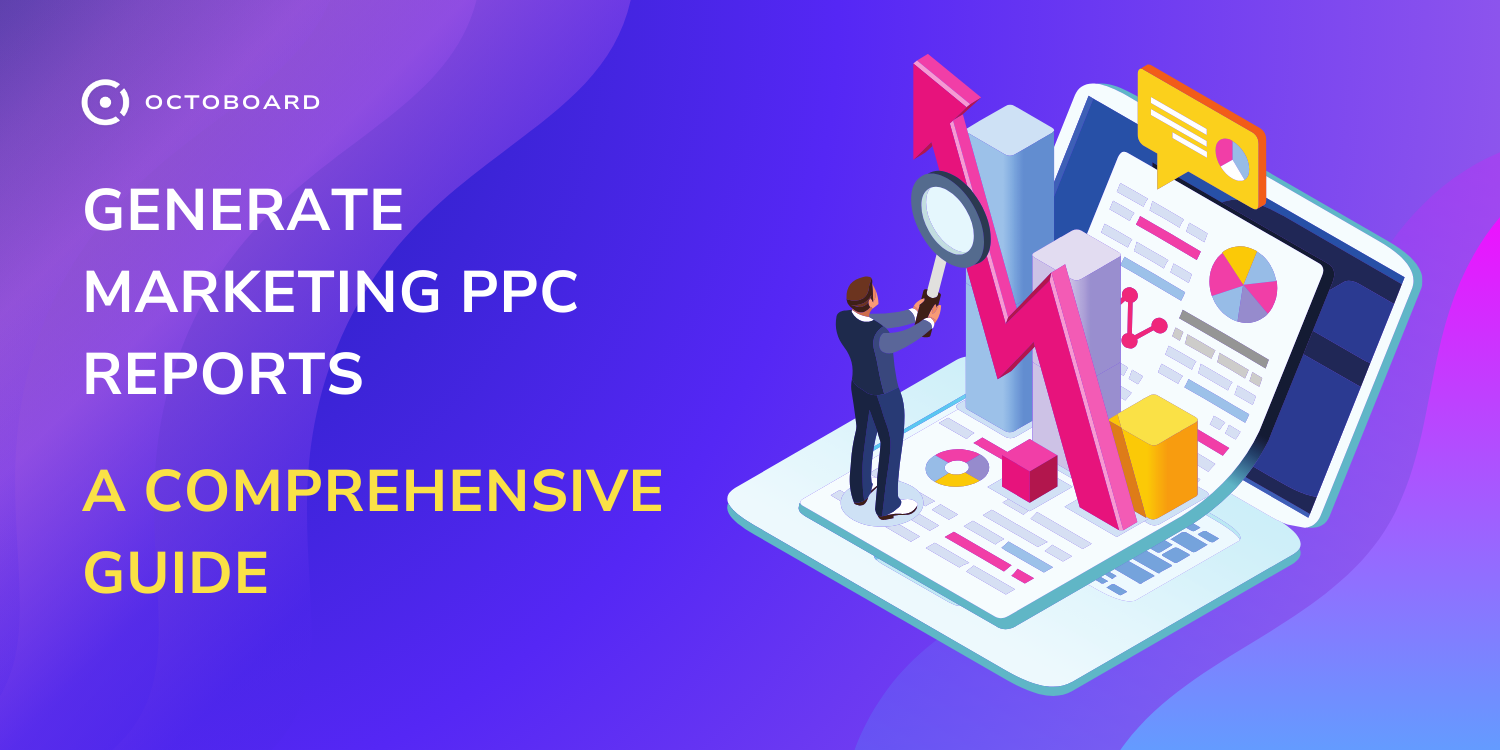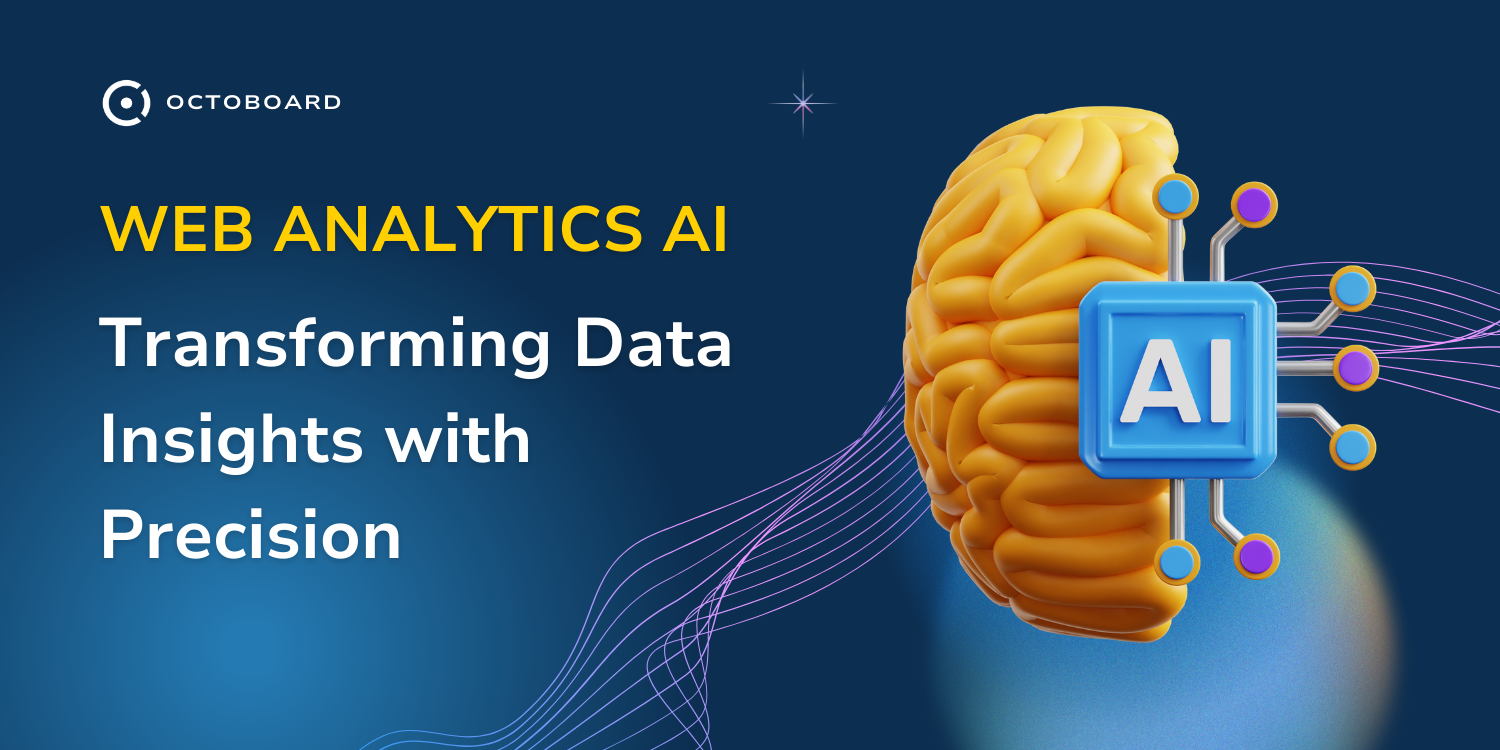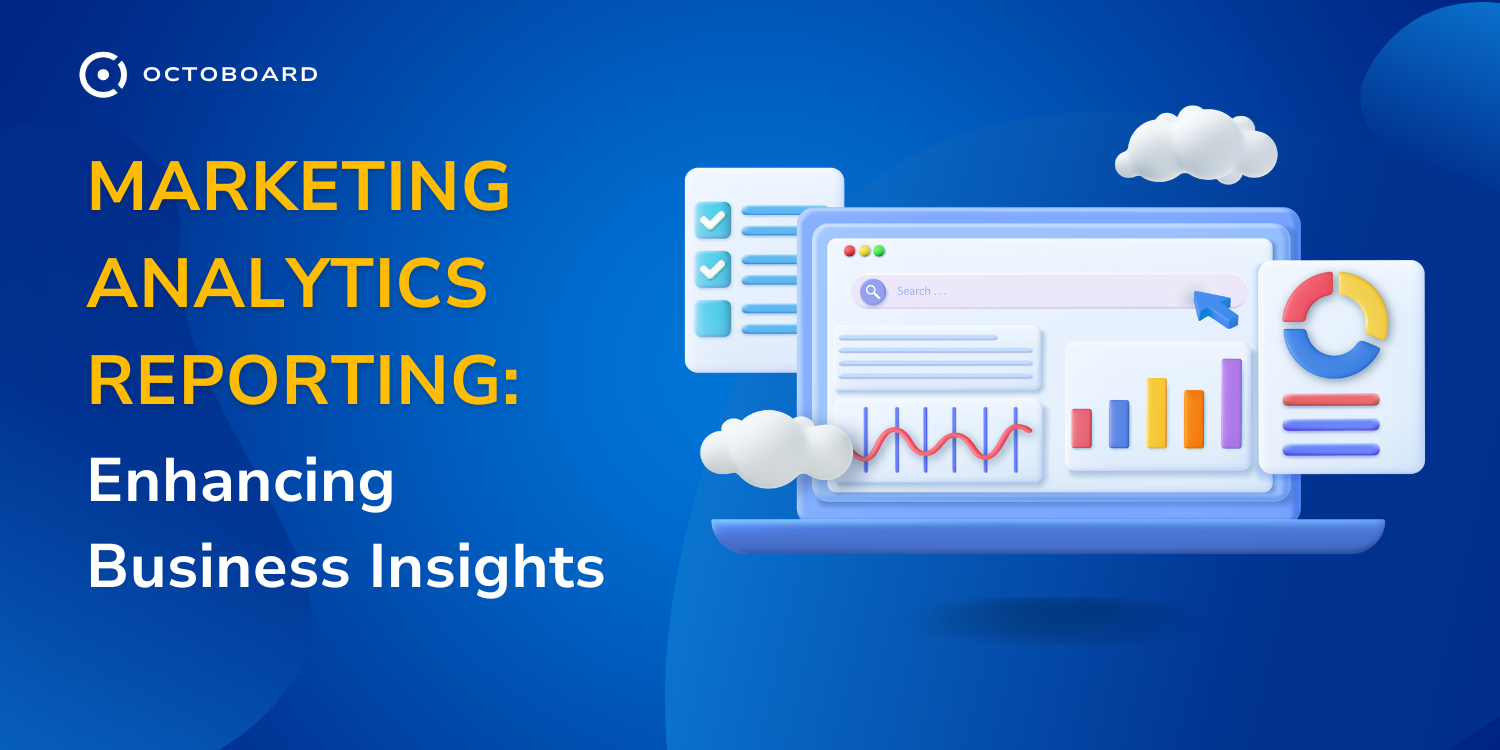Top Web Analytics and AI trends in 2024
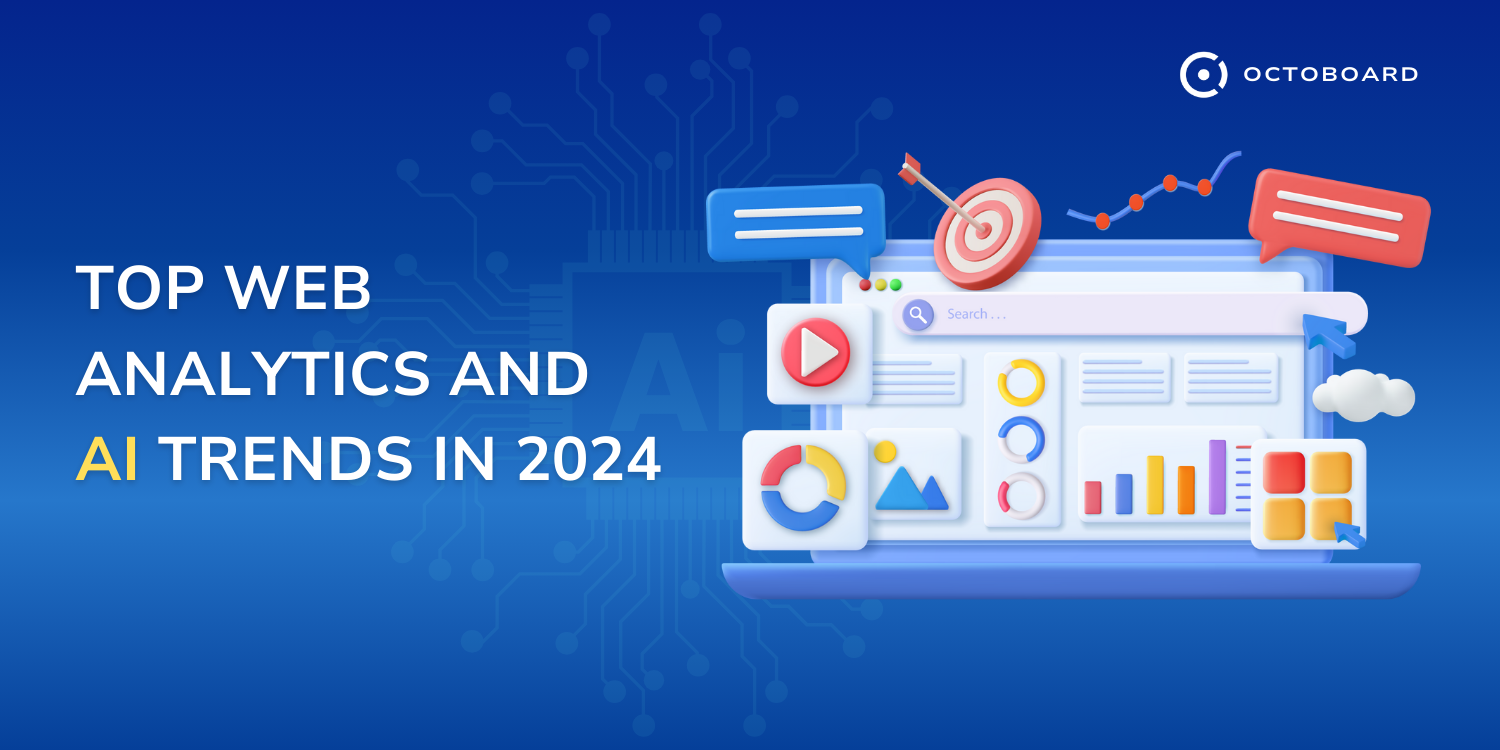
- Top Web Analytics Data Trends in 2024
- Enhanced AI Integration: 25.4%
- Cross-Platform Tracking: 18.4
- Privacy-First Data Strategies: 14.3
- Edge Computing: 12.2
- Augmented Analytics: 11.3
- Generative AI: 6.8
- Data Visualization Improvements: 4.4
- Focus on Real-Time Data Analytics: 4.2
- Decision Intelligence: 2.9
- The Role of AI in Web Analytics Trends for 2024
- Enhanced Predictive Analytics: 20.1%
- Automated Insights and Reporting: 19.1%
- Real-Time Data Processing: 13.2%
- Improved User Experience Through Personalization: 12.1%
- Advanced Anomaly Detection: 9.9%
- Integration with Other Technologies: 9.3%
- Natural Language Processing (NLP): 9.1%
- Generative AI for Insight Generation: 7.2%
The landscape of web analytics is evolving rapidly in 2024, driven by advancements in technology and changing consumer expectations. Here are the key trends shaping the field:
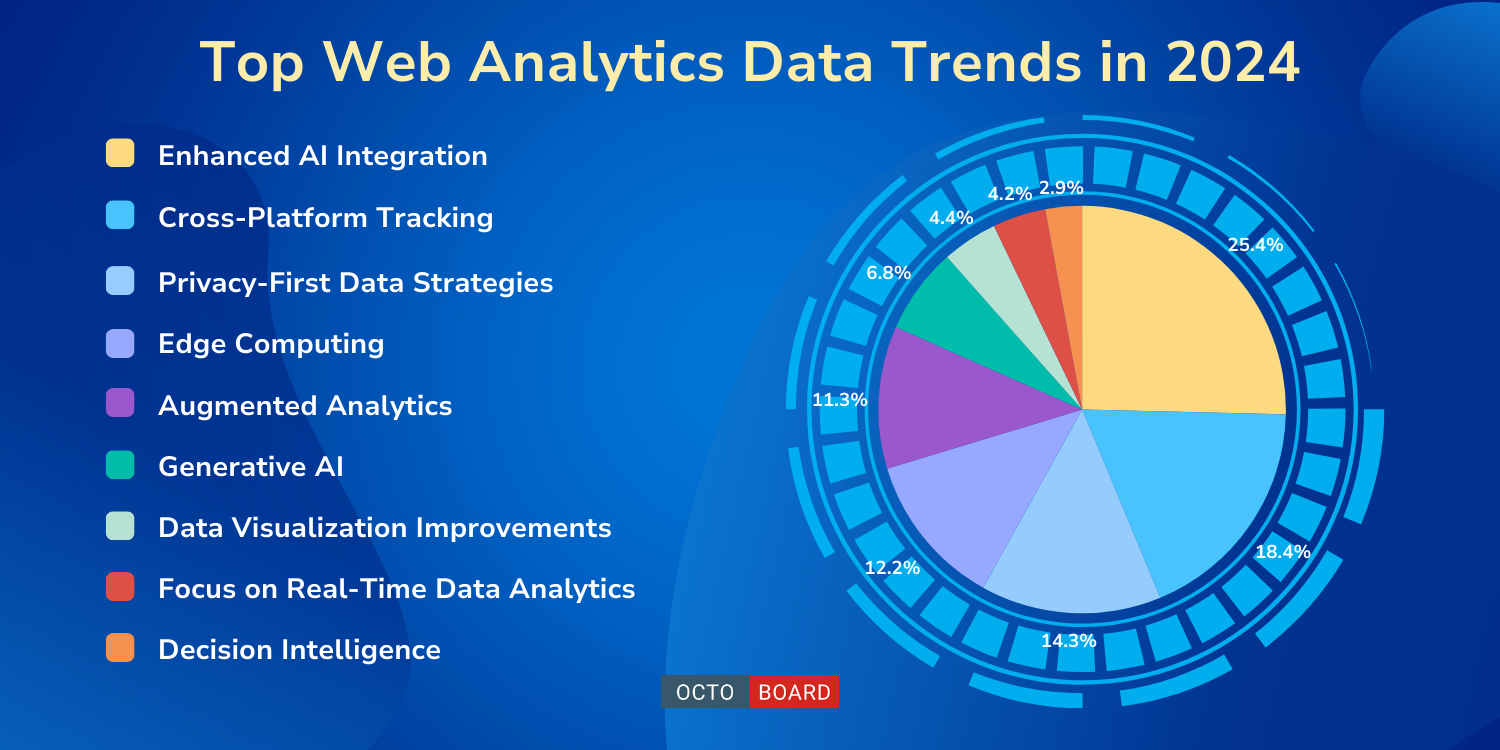
Artificial Intelligence (AI) and Machine Learning (ML) are increasingly central to data analytics. Tools like Google Analytics 4 (GA4) are leveraging AI to provide predictive analytics, allowing businesses to forecast user behavior and market trends more accurately. This shift enables a proactive approach to marketing strategies, moving away from reactive tactics.
Octoboard offers integrated ChatGPT and OpenAI data insights that are available to all users of the Octoboard platform at no additional cost.

With user interactions spanning multiple devices and platforms, cross-platform tracking has become essential. GA4 enhances this capability, providing a holistic view of user engagement across different channels. This integrated approach helps businesses understand the full customer journey, optimizing marketing efforts accordingly.
As data privacy regulations tighten globally (e.g., GDPR, CCPA), businesses are prioritizing first-party data collection strategies. This trend emphasizes the need for analytics platforms that respect user privacy while still delivering actionable insights. Companies like Contentsquare are leading the way with privacy-first analytics solutions that do not rely on third-party cookies.
The rise of edge computing is transforming how data is processed and analyzed. By processing data closer to its source, organizations can achieve real-time insights with reduced latency. This trend is particularly beneficial for industries reliant on IoT devices, enabling faster decision-making and operational efficiency.
Augmented analytics combines AI and natural language processing to simplify data analysis for both technical and non-technical users. This trend democratizes access to insights, allowing more stakeholders within an organization to engage with data effectively and make informed decisions.
Generative AI tools are revolutionizing how data is analyzed and reported. These models can automate the generation of insights and reports from complex datasets, streamlining workflows and enhancing productivity in data-driven environments.

Advanced data visualization techniques are becoming increasingly important as they help translate complex datasets into understandable formats. Enhanced visualization tools enable organizations to present data in engaging ways, facilitating better decision-making across all levels of the business.
The demand for real-time analytics continues to grow as businesses seek immediate insights to drive timely decisions. Organizations are investing in technologies that support real-time data processing to stay competitive in fast-paced markets.
This emerging trend merges various disciplines—data science, social science, and decision theory—to create systems that enhance decision-making processes based on comprehensive data analysis. In web analytics, this could streamline product development and customer engagement strategies.
These trends indicate a significant shift toward more intelligent, responsive, and privacy-conscious approaches in web analytics for 2024, reflecting the broader changes in digital marketing and consumer behavior.
In 2024, Artificial Intelligence (AI) is set to play a transformative role in web analytics, enhancing capabilities and reshaping how businesses interpret and utilize data. Here are the key ways AI is influencing web analytics trends this year:
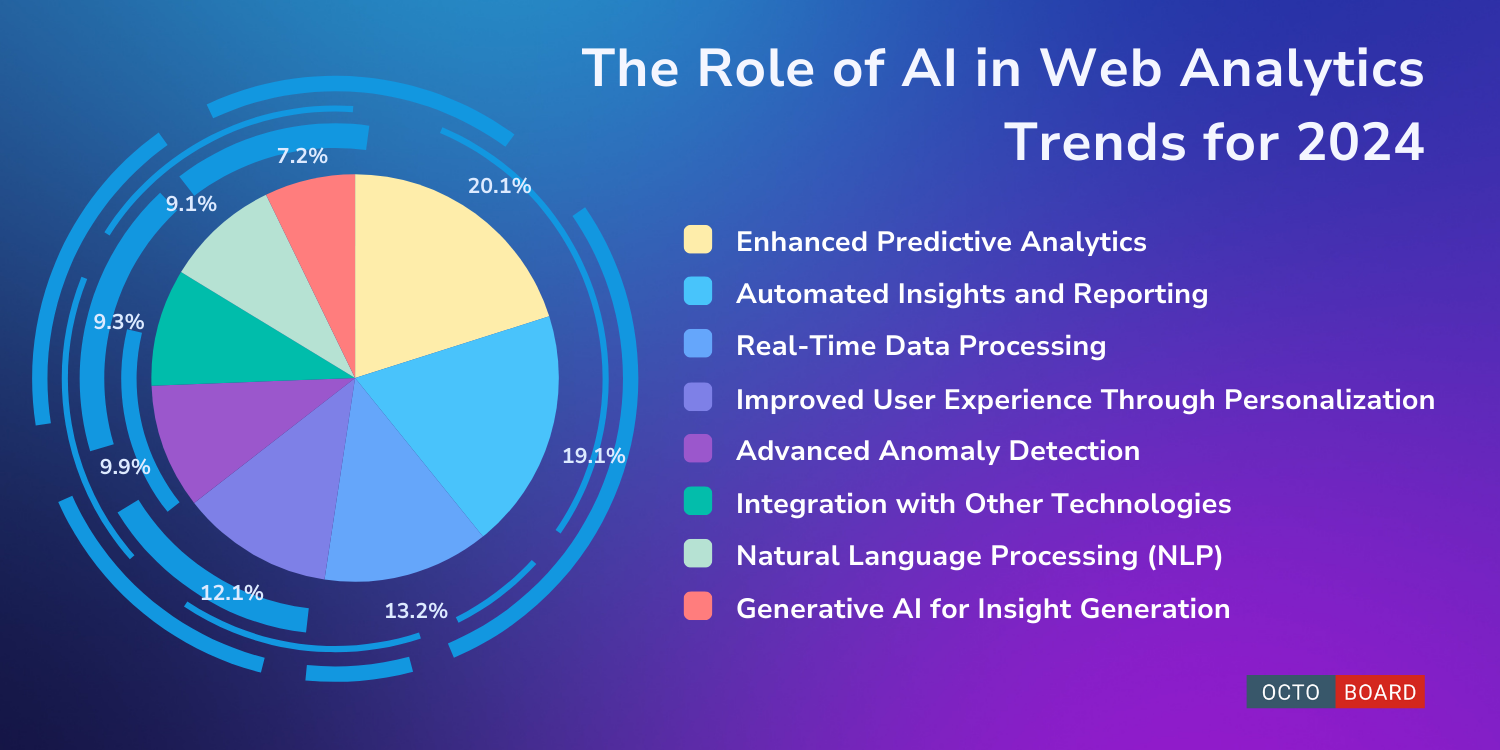
AI-driven predictive analytics is becoming a cornerstone feature in tools like Google Analytics 4 (GA4). By leveraging historical data, machine learning algorithms can forecast future user behaviors and market trends, allowing businesses to shift from reactive to proactive strategies. This capability enables organizations to allocate resources more effectively and optimize marketing campaigns based on anticipated user engagement.
AI is streamlining the reporting process by automating the generation of insights. This reduces the manual workload for analysts, allowing them to focus on strategic decision-making rather than data crunching. With AI's ability to analyze large datasets quickly, businesses can receive timely reports that highlight key trends and anomalies without extensive human intervention.
The demand for real-time analytics is growing, and AI technologies are enhancing the ability to process and analyze data instantaneously. This immediacy empowers businesses to make swift, informed decisions in response to market changes or consumer behavior shifts, providing a competitive edge.
Octoboard offers over 30 real-time data analytics metrics as part of its real-time web analytics platform.
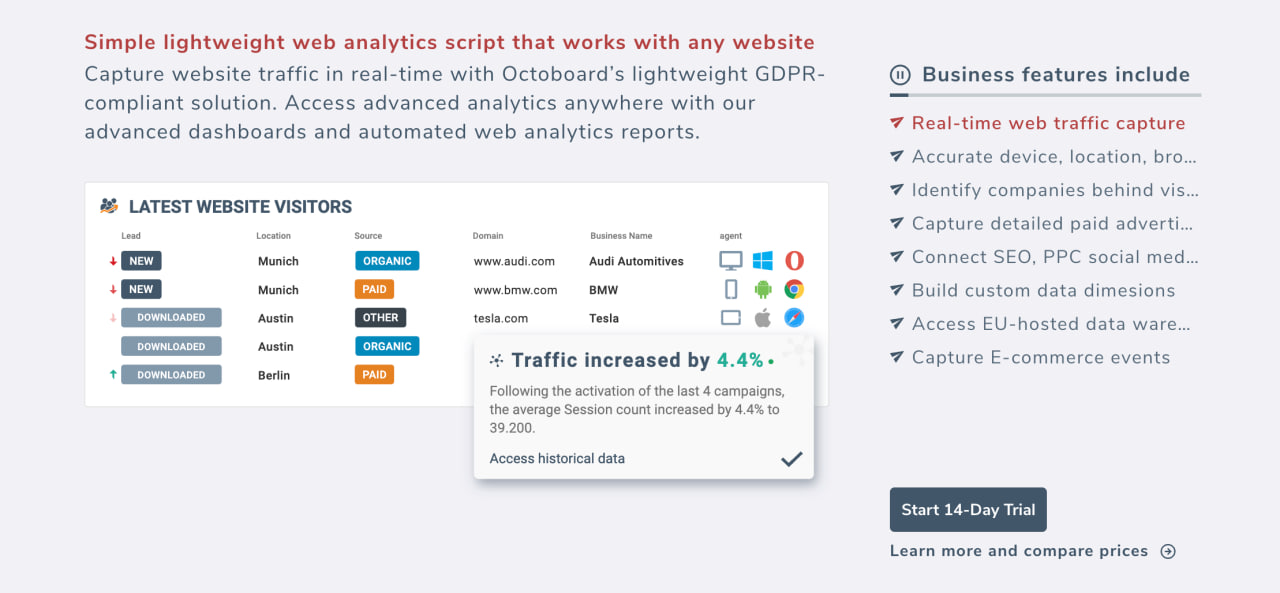
AI algorithms are optimizing user experiences by analyzing individual preferences and behaviors. This allows businesses to deliver hyper-personalized content and recommendations in real time, significantly boosting user engagement and conversion rates.
AI's ability to identify anomalies within datasets is becoming increasingly sophisticated. By continuously monitoring data streams, AI can alert teams to irregular patterns that may indicate issues or opportunities, facilitating quicker responses to potential problems.
AI is enhancing the integration capabilities of web analytics tools with other platforms, such as CRM systems and marketing automation tools. This holistic approach allows for a more comprehensive view of customer journeys across various touchpoints, improving overall marketing effectiveness.

With advancements in NLP, users can interact with analytics tools using natural language queries. This democratizes access to data insights, enabling non-technical users to extract valuable information without needing advanced analytical skills.
Generative AI models are revolutionizing how insights are generated from complex datasets. These models can produce human-like outputs and automate report generation, making it easier for organizations to derive actionable insights from their data.
As these trends unfold in 2024, AI will not only enhance the efficiency of web analytics but also empower businesses to make more informed decisions based on deeper insights into consumer behavior and market dynamics.

